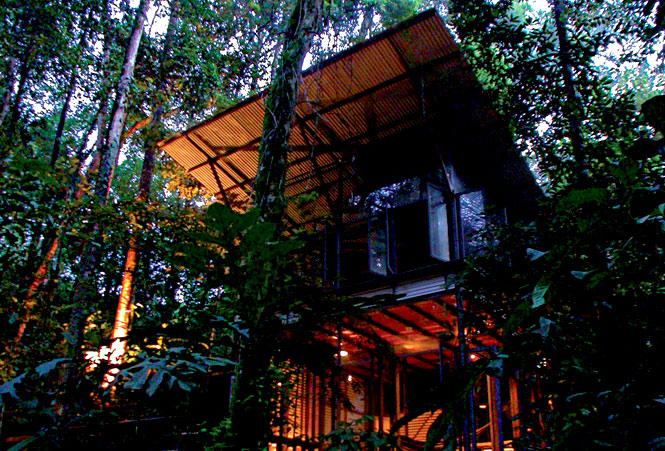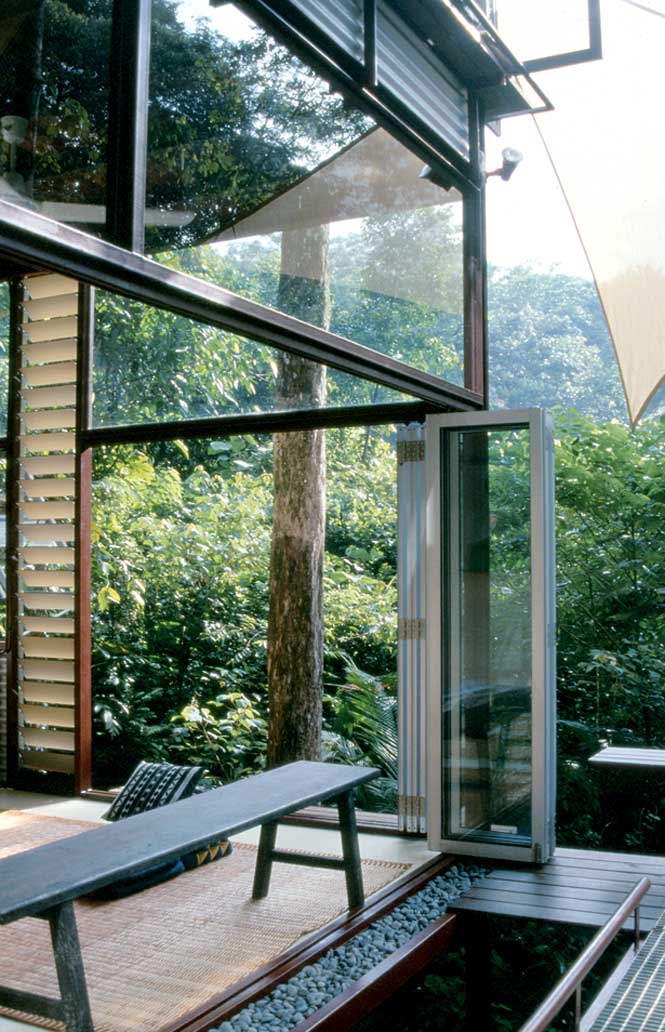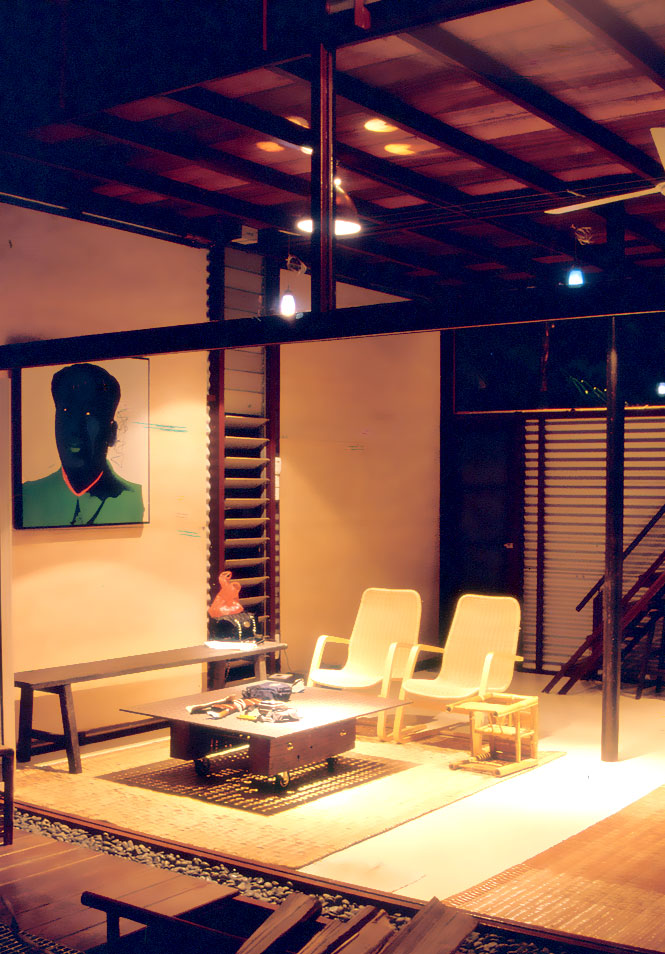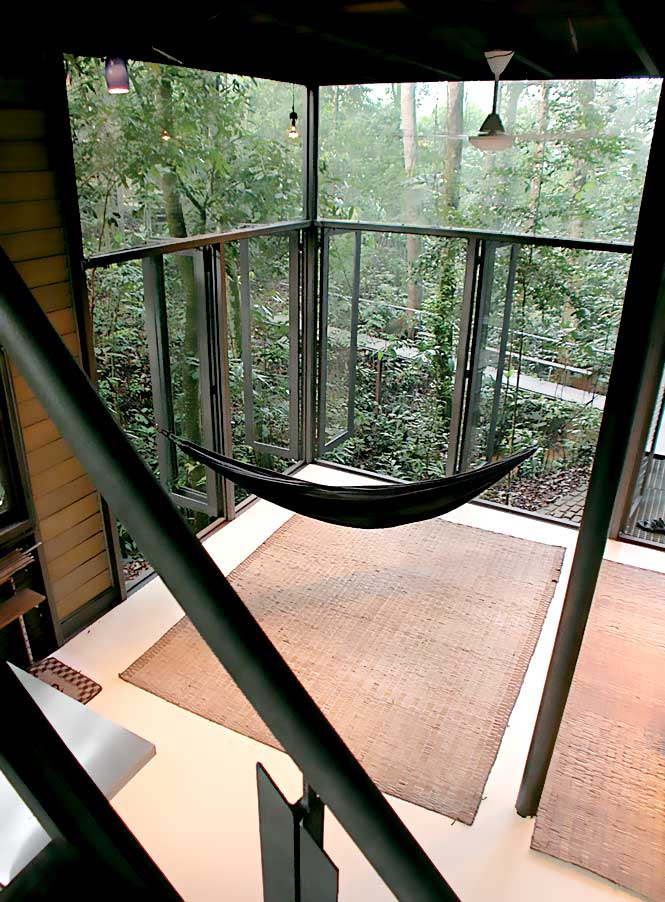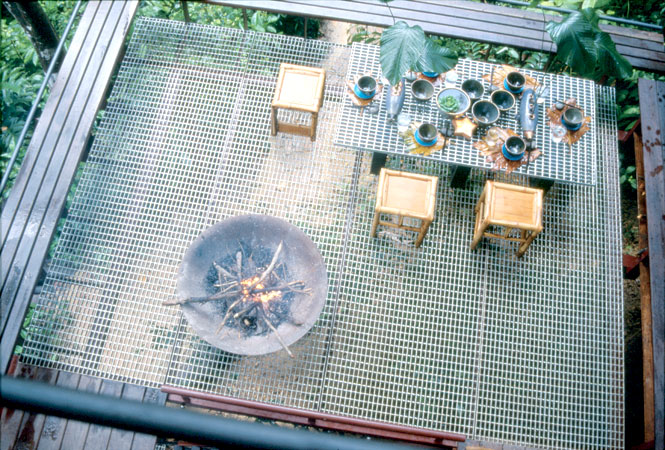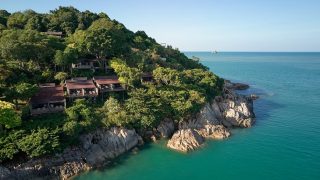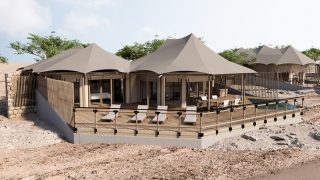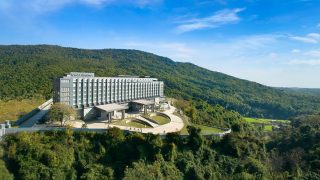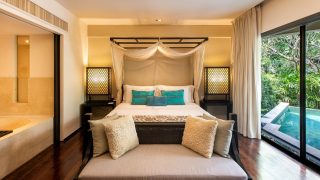Above: A glass-and-timber lodge at Sekeping Serendah, amid the rain forest on the outskirts of Kuala Lumpur.
Tree houses get a contemporary twist at a Malaysian eco-lodge
By Barry Stone
I was just 10 years old when I first tried my hand at architecture. It was a tree house: a two-storied refuge that rose through the apricot tree in our backyard in Melbourne, held together by countless nails and entered by way of flapping doors made from canvas bags. Sadly, the tree met with a premature demise, and my arboreal sanctuary fell into a state of disrepair. I never thought I’d see its like again. But some 20 years later, just on the other side of the equator, I discover that another architect—a real architect—has carved out his own tree dwellings amid the Malaysian rain forest.
Less than an hour’s drive north of Kuala Lumpur, just outside the small town of Serendah in the foothills of the Genting Highlands, landscape architect Tommy Ng has built Sekeping Serendah—an eco-lodge set over two hectares of undulating, tropical jungle alongside a bubbling brook. Working alongside a handful of other young architects at his award-winning company Seksan Design, Ng notched up dozens of high-profile urban creations before turning his talents to Sekeping: a labor of love initially developed in 2000 as a weekend retreat for him and his wife, Caroline, and later expanded and opened to visitors for overnight stays.
Inspired by Australian firm Stutchbury and Pape’s Israel House project amid the rain forest surrounding Paradise Beach in New South Wales, Ng modestly describes Sekeping as a conglomeration of “sheds.” There’s certainly nothing lavish about the five buildings (two made from glass, two from mud, and one from timber), but they’re far from humble. The lodgings are, in fact, a sleek and modern testament to Ng’s passion for environmental design. They’re constructed from glass, steel, aluminum, mud, wood, and chicken wire, all of which was carried in by hand to minimize the environmental impact and all sourced locally—Ng believes that materials lose their “soul” if they’re transported across vast distances. He also believes that architecture does not have to be invasive. His “sheds” are built around the rain forest, rather than in place of it. “It’s about having respect for the land,” Ng says. “It’s about treading as lightly as possible, and about restraint—knowing when to stop.”
When I arrive at Sekeping Serendah (literally, “a piece of Serendah”), it’s the stilted glass-and-timber lodges that first catch my attention. Amid ferns and tall trees, three duplex buildings rise toward the forest canopy on steel posts, leaving the ground below clear for the natural meanderings of mountain streams. Inside of each, the lower level is home to a kitchenette: self-catering is encouraged, but there are a handful of small restaurants in Serendah, a five-minute drive down the road. The adjoining living room is comfortably furnished with oversize armchairs, hammocks, rattan rugs and thick iron posts that double as design features and coffee tables. Large perforated-iron grates wing off to one side, providing an expansive deck area that is dappled in soft, forest light during the day. At night, fires are lit in conical drums, casting a warm glow over alfresco meals.
The second floor of my lodge gives way to a spacious sleeping area. Mosquito nets hang over mattresses elevated on a series of cube-shaped mesh supports that act to deter the advance of creepy crawlies, of which there are many thanks to the fact that the only walls are those encircling the roofless bathroom. The rest of the building is open to the world, save for panels of louver windows and aluminum-and-glass bifold doors.
According to Ng, the buildings were designed to minimize barriers between guests and nature: Sekeping is about lying back and enjoying the great outdoors, he says. While the lack of privacy takes some getting used to—I’m conscious of the fact that the eyes of the jungle are always upon me—the open-air design means that spaces are naturally cool and light, even in the absence of air-conditioning.
Given Ng’s passion for landscape design, it comes as no surprise that considerable thought has also gone into the garden. Elevated walkways take you over the forest floor, winding up the valley to a small clearing. Here, the rain forest gives way to a grassy expanse peppered with obscure, modern sculptures crafted by local artists, all encircled by gabion walls made from locally quarried stone set in a framework of wire mesh. A spring-fed swimming pool is at the center of it all, surrounded by bamboo gazebos and recliners overhung with foliage.
The day I visit, the pool area at Sekeping Serendah is abuzz with the chatter of excited design students from Universiti Putra Malaysia on the outskirts of Kuala Lumpur. They’re here, I’m told, to get ideas for how to use local materials and environmentally friendly design to develop cost-effective housing for the local orang asli (aboriginal) communities. It’s hoped, the students tell me, that Ng’s eco-lodge will provide a template for the construction of future dwellings in the area.
It’s certainly a template that I wish I’d stumbled upon all those years ago, when my apricot tree was still alive and well.
Sekeping Serendah is a 45-minute drive north of Kuala Lumpur. 60-12/324-6552; serendah.com; doubles from US$83.
Originally appeared in the February/March 2009 print issue of DestinAsian magazine (“Sweet Serendah”)

